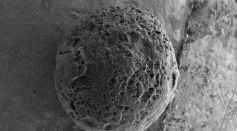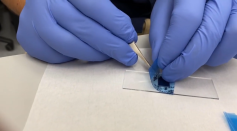Tags: Nanotechnology

New Approach To Compute Long-Distance Interactions Between Molecules? New Research Has an Answer
Nanomaterials: Invisible Killers in Consumer Products

Arranged Nanoblocks Help Improve Solar Cell Efficiency
Biomolecular "Crown" Now Observable, Thanks to a Novel Method
Scientists Establish Relationship Between Nanotube Length and Friction, To Guide Creation of Stronger Fibers
Researchers Set New Guinness World Record for Finest Woven Fabric

Ultra-Efficient, Nano-Thin Piezoelectric Materials Advance Self-Powered Electronics
Quantum Entanglement of Electrons Achieved Through Heat
NIST Creates A "How-To Tutorial" for DNA Origami
Emory Chemists Invent Shape-Shifting Nanomaterial, Holding Potential for Biomedical Applications

LG Unveils New QNED TV, Using Mini LED Tech for Its Premium Display

Researchers Devise A Novel Method of Producing Carbon Spheres

This New Nanomaterial COVID -19 Test Only Takes 5 Minutes
Researchers Use Gold Nanorods To Distinguish Between "Killer" and "Healer" Cells
Self-Erasing Technology Could Prevent Counterfeiting, Tampering
Researchers Discover Novel Method for Creating Colloidal Diamonds

Physicists Develop Nano-Sized SQUID Capable of Detecting Extremely Faint Magnetic Fields
Paper is for Writing, Drawing, and... Typing? Engineers Turn Piece of Paper Into Wireless Keyboard
PAC-MAN vs COVID-19 - Scientists Are Developing Gene-Targeting Technology to Beat the Virus
Pinpointing Individuals at Risk of Death from COVID-19 a Possibility for Nanotechnology: Michigan State University Scientist Says
Most Popular

Viruses vs Bacteria: Key Differences, How They Spread, and How We Treat Them

How Ice Cores Reveal Climate History: Insights from Paleoclimate Science and Ancient Data

Science-Backed Longevity Supplements: The Best Anti-Aging Vitamins for Powerful Healthy Aging Support

Carbon Footprint 101: What It Is and Simple Ways to Reduce Yours




